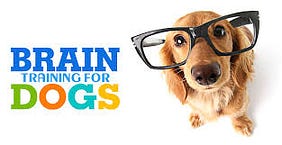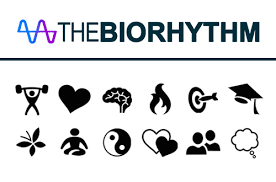Chicago Health Reviews: Brain Training For Dogs Review 2021
My Review Of Brain Training For Dogs In 2021

*-This article does contain affiliate links
Brain Training For Dogs Review
“Brain Training For Dogs” is a video training course taught by Adrienne Farricelli, who is a Certified Dog Trainer, and she's also a very well-established as knowing her stuff. The course is sold as a way to “develop your dogs hidden intelligence”, but does it actually work? In this review, we’ll take a look at the course, and what it actually has to offer, in terms of training your dog.
The “Brain Training For Dogs” dog obedience training system is a thorough and fun method to train your dog. By using the puzzle system to train your dog to use his brain power, you dog views the training as a game, and not as a chore that he must perform in order to please you. The fact that it uses a treat reward system in order to train your dog is a very beneficial way to train your dog, and it makes the training of most dogs much easier than some other methods that are used.
What Will “Brain Training For Dogs” Teach?
There are seven modules to the “Brain Training For Dogs” course. They are set up and divided into modules as school work, and are:
* Preschool
* Elementary School
* HIgh School
* College
* University
* Graduation
* Einstein
As a bonus portion of the video training system, you’ll also receive “7 Trick Training Video”, “Obedience 101”, “Polishing Up Training”, and an archive video access, and access to a private forum where you can link up with other members to discuss how your training is going, and receive dog training tips and advice.
The Core Course Work
There are several aspects of the training that are standouts in the dog obedience training course. The major lessons in the “Brain Training For Dogs” course are:
Train Them To Pay Attention To The “Smack” Sound
You should have a sound you can make that will immediately grab and keep your dogs attention. Adriennne uses the “smack” sound, or the sound that your lips make when you kiss the air. This is her sound to her dogs, but you can have one of your own to communicate with your dog, that’s up to you. The point of the sound is that every time your dog hears it, he knows that it’s time to pay attention to your commands.
Teach Your Dog To Make Eye Contact
You should teach your dog to look you directly in the eye, that way you know you have his full and complete attention. You can do this by holding a treat near your eye, and giving them the treat once they meet and hold your gaze for a moment. By looking you in the eye, it will trigger a release of oxytocin between you and your dog, which is also the hormone that is responsible for the parent/child attachment.
It’s Best To Train When They’re Excited
The best time to work on training with your dog is when they’re very excited to see you, such as when you return home from work. This is because they’re desperately wanting your attention and approval at this time, which means they’ll be more receptive to learning something that they know will make you happy. When they’re in people pleasing mode is the easiest time for your dog to learn something new.
Reward Them For Voluntary Check Ins
When you’re outside with your dog, or in another area of your home, and your dog comes back to you on his own, just to check in you should reward him with a treat. This teaches your dog that anytime he voluntarily comes back without having to be called and ordered to come back, that will earn him a treat. This increases the chances that he will return to you upon the first time that you call for him.
Switch Up Your Routine
You should change up your dogs walking routine regularly, instead of simply taking the same path day after day. By exposing your dog to new sights, smells, and sounds, you’re ensuring that they’re constantly learning something new, and that their brains are always being stimulated by new information. Bored dogs are bad dogs, and by switching your routine, you’re cutting down on the chances that your dog will want to misbehave.
Verbal Hot And Cold
Play the verbal hot and cold game with your dog. Hide an object, like a toy or treat. As your dog gets closer to it, excitedly start calling hot. If he’s moving further away, use a deeper voice to call out cold. What you’re actually doing is developing a language of approval and disapproval with your dog. He knows that by going toward the reward object, your voice will be higher and more excited, and that by getting further away from the reward, and not staying on course, your voice will become calmer and lower.
Play Hide And Seek With Your Dog
You’ll want to figure out some really good hiding spots, simply because your dog's sense of smell is so powerful, but you should play hide-and-seek with your dog. It reinforces his ability to find an object that he’s seeking. Dogs are natural hunters, and because they don’t normally have an opportunity to hunt and find prey, it will often lead to a high level of boredom in your dog. By giving them the opportunity to “hunt” for you, it’s giving them the ability to work out that part of their brain.
Set Up A DIY Obstacle Course
You should set up a training course, or obstacle course, using household objects. Your dog will not only get the added benefit of exercise while running the course, but it is also great brain exercise to figure out the obstacles and what they’re supposed to do to get over or around them. You can use items like dining chairs, laundry baskets, and step stools in order to build the course. It doesn’t have to be very difficult, but it should change up what you’re requesting him to do, and once he has it figured out, you can change the course around to keep his brain actively seeking an answer to the puzzle.

21 Puzzle Dog Obedience Training
The entire dog obedience training course consists of 21 different puzzles for your dog to figure out, and are designed to help make him think his way through the training. It has a lot of puzzles that challenge your dogs hunter and scavenger drive, because that drive is what causes dogs to get bored, and find and chew things that they aren’t supposed to. By directing that hunter and scavenger drive toward training puzzles, it will help to keep your dog on course, and not acting out because of boredom.
The Bonus Dog Training Tips
In addition to the “Brain Training For Dogs” course, there are bonus video training materials with the system. In the “7 Trick Training” video, you will learn how to teach your dog to:
* Bow
* Cover Eyes
* Play Dead
* Dance
* Shake
* Howl
* Roll Over
They’re all great basic tricks, and a good starting point to begin the training between you and your dog. You’ll also receive the “Obedience 101” video, which teaches you the very basics in dog obedience training, like how to use treats as a food reward for completing basic commands. This is a system that works very well in most dog obedience training.
The system also includes the “Polishing Up” training video, which helps you learn how to maintain their attention after you’ve taught them the tricks, and how to use continuous training methods on your dogs. The system uses Adrienne and her own dog as an example for the training, so you can observe a dog that has been trained using the very method that is being taught in the videos.
You will also have access to the private forum, where you can link up with other dog owners who have used the training system. You can share tips, and ask for advice from other members, which can be beneficial if you’ve gotten to a point where you’re stuck with the training of your own dog.

Overall Rating
The “Brain Training For Dogs” dog obedience training system is a thorough and fun method to train your dog. By using the puzzle system to train your dog to use his brain power, you dog views the training as a game, and not as a chore that he must perform in order to please you. The fact that it uses a treat reward system in order to train your dog is a very beneficial way to train your dog, and it makes the training of most dogs much easier than some other methods that are used.
The system doesn’t teach any intimidation training tactics, or any training tactics that punish your dog for not learning the training material. This is a great method over those tactics, because a dog doesn’t need intimidation or punishment in order to learn what is expected of them.To learn more or get instant access to Brain Training For Dogs click this link here.
Original article available at Dog Personal Trainer at Medium






Comments
Post a Comment